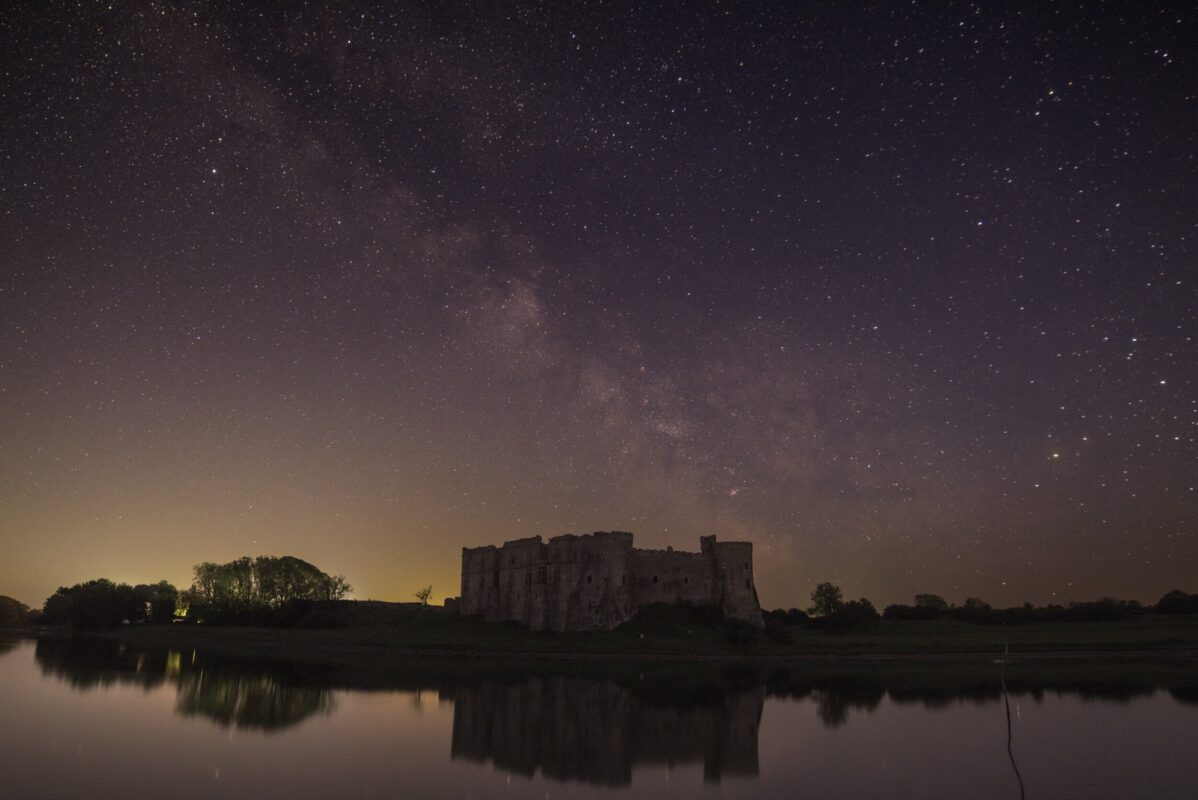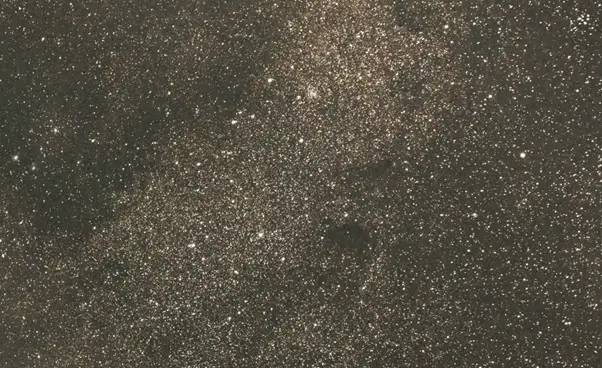As you’ve probably heard, we live in a galaxy called the Milky Way. It took a while to figure this out. A little over one hundred years ago it was widely believed that the Milky Way was the entire universe.
In fact, the word “galaxy” was derived from the Greek term for the Milky Way, literally “milky circle”, describing the swath of silvery luminance arching across the night sky.
For millennia, “Milky Way” and “galaxy” meant the same thing. It wasn’t until the work of Vesto
Slipher and Edwin Hubble settled the Great Debate about the true nature of those strange “spiral nebulae” that we had definitive proof of the existence of other galaxies far outside our own.
Because we live inside it, we cannot see the Milky Way in its entirety any more than we can see the entire Earth while standing on it. However, there is still plenty of the Milky Way you can see with a telescope, binoculars, or even your unaided eyes.
A New Perspective
From a dark site on a clear, moonless night you can gaze along the plane of our majestic home galaxy, looking across thousands of light years of interstellar space.
In doing so, you’ll begin to break free from the illusion that our planet resides in the centre of a dome of fixed stars and start to get a sense of our true place in the cosmos; namely, the Sagittarius Arm of the Galaxy, some 27 thousand light years from the galactic core.
In this article we’ll discover the best times to view the Milky Way, discuss some of the equipment you might use, and explore the many features and hidden treasures it contains.
When to View the Milky Way
In the northern hemisphere, summer is prime Milky Way season, though you can get a preview if you stay up late enough in the spring to watch the Summer Triangle rise in the east.
By late July, the Milky Way stretches almost from horizon to horizon and the spectacular region of the galactic core is visible well into the night.
If you miss out on prime summer viewing, there will still be opportunity to watch it set in the fall, aided by longer nights (and no bugs!).

Mind the Moon
Seeing the Milky Way in all its glory requires dark skies. If you are planning a stargazing trip out of the city, aim for the weeks immediately before and after the new moon. Moonlight will spoil your view just as surely as an urban light dome.
How to View the Milky Way
There is no right way to view the Milky Way. Its majesty can be appreciated by anyone, regardless of whether you have any experience or equipment. All that is required is a clear sky, curiosity, a bit of preparation, and the willingness to be outside after dark.
Viewing with the Naked Eye
This is actually the best way to appreciate the Milky Way. I can remember being awestruck at my first naked-eye observation from a dark site, how it felt like I could see deep into space. The night sky had acquired a three-dimensional aspect I had never seen before.
If your skies are sufficiently dark (ideally Bortle 4 or lower) and free from moonlight, it will be impossible to miss. Pull up a lawn chair or throw down a blanket, relax, and let your eyes adapt to the celestial display.
You will be looking at the combined light of millions of distant stars, originating at the outskirts of Perseus, brightening through Cassiopeia, blazing across the Summer Triangle, and finally coming to a glorious climax in Sagittarius. Use a red flashlight to refer to a labelled chart of these areas to learn some of the many highlights.
- Dark dust lanes: the most prominent of these is the Great Rift, appearing as a dark cloud or gap, which cleaves the Milky Way, noticeably darker than the sky itself.
- Brilliant star clouds such as the Scutum Star Cloud and Large Sagittarius Star Cloud appear as the brightest and densest region of the Milky Way.
- This will also be a great time to spot meteors and maybe even aurora borealis!

Viewing with Binoculars
A normal pair of birdwatching binoculars will reveal thousands of additional stars along the Milky Way. It can take some practice to orient yourself and figure out where you are pointed, but once you get the hang of using them, binoculars are an ideal way to explore the plane of our galaxy.
- Look for binoculars in the 7-10x power range, with 40-50mm objectives. This will provide the optimal balance between magnification and light grasp without being too heavy or difficult to hold steady.
- Ensure the eye and objective lenses are clean, using microfibre cloth and lens-cleaning solution.
- Use a reclining lawn chair for maximum viewing comfort.
- Refer to star charts to identify objects of interest and see how many you can spot. Start with some pretty open clusters in Cassiopeia before moving up to the magnificent region of Cygnus, directly overhead on summer nights. See if you can spot the North America Nebula, a large region of glowing hydrogen, off the tip of the Cross. Moving down through Scutum to Sagittarius, you’ll be treated to brilliant star clouds and some remarkable objects such as the Wild Duck Cluster (M11), the Swan Nebula (M17), and the Lagoon Nebula (M8).

Viewing with a Telescope
Point a telescope along the Northern Cross asterism of Cygnus and it virtually explodes with stars. A small rich-field telescope on a manually-driven mount provides a perfect way to start exploring: I use an 80mm f/6 refractor on an AZ4 mount.
With a larger instrument like an 8-inch Dobsonian, the foreground stars seem to be caught up in a gauzy web, caused by the faint light of innumerable background stars.
One of my favourite stargazing activities is to plop a low-powered eyepiece into the focuser and scan the region of Cygnus, looking for interesting star patterns. There are also a multitude of showpiece objects to view:
- The Dumbbell Nebula (M27) in Vulpecula is one of the finest, and largest, planetary nebulae in the sky. To me, it looks more like a ghostly apple core.
- The M11 cluster is even more impressive in a telescope, and well worth spending some time on.
- Sagittarius is so packed with showpiece objects that you hardly even need to look for them. See if you can catch the Swan of M17 floating through the blackness of space.
- Be sure to track down one of the finest, and most underappreciated, globular clusters: M22, the Great Sagittarius Cluster.

1 thought on “Can We See the Milky Way Through a Telescope?”